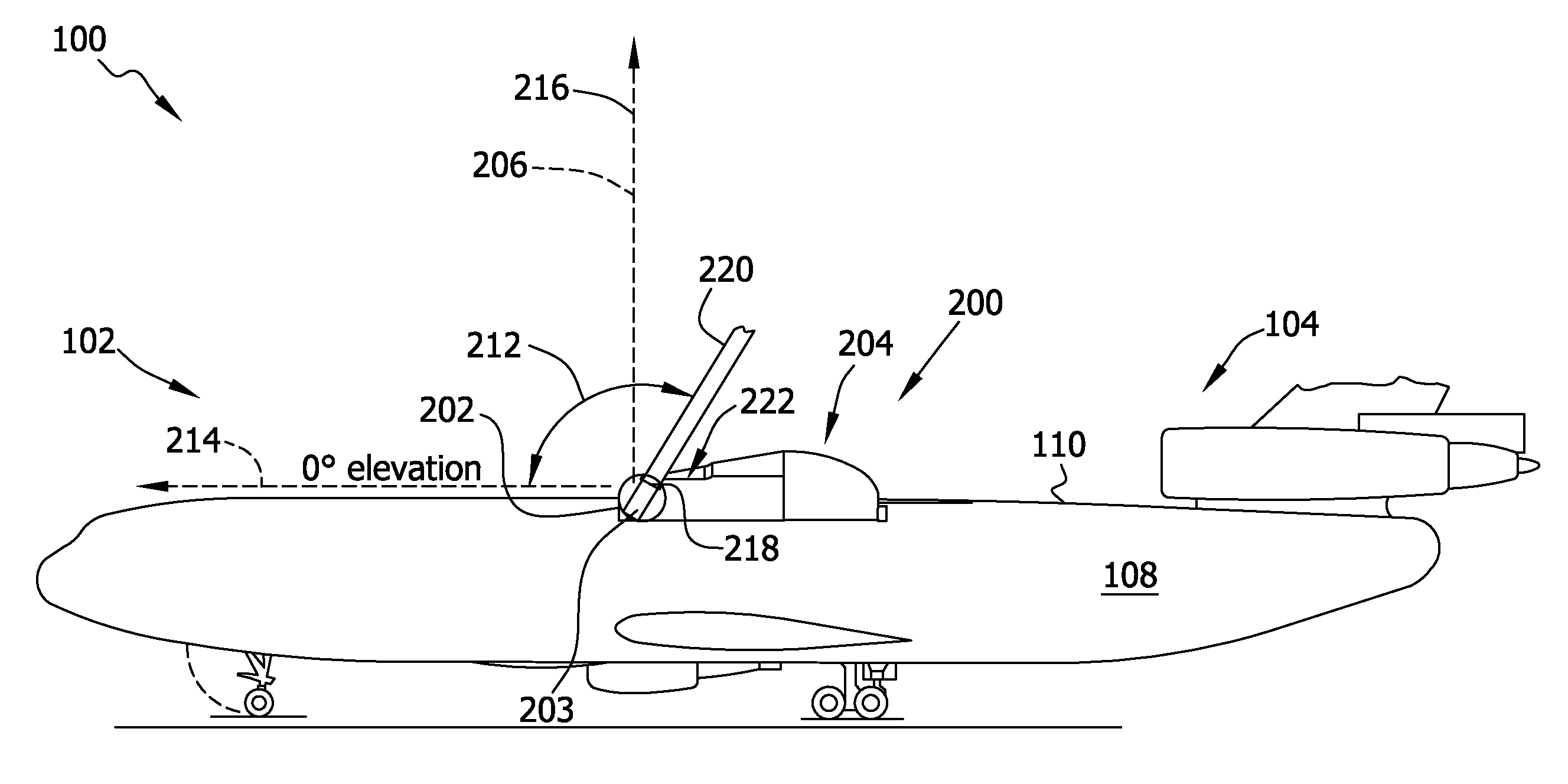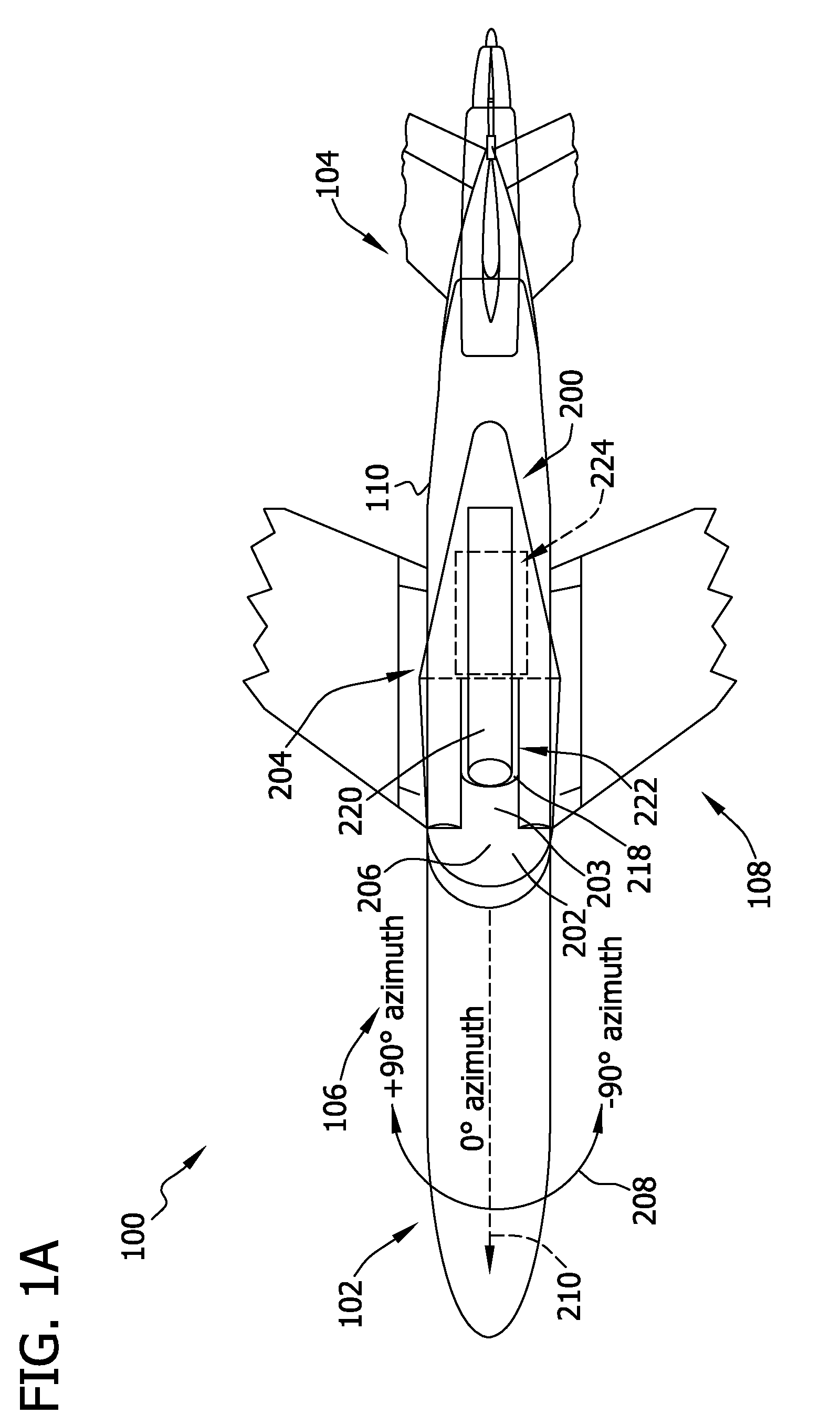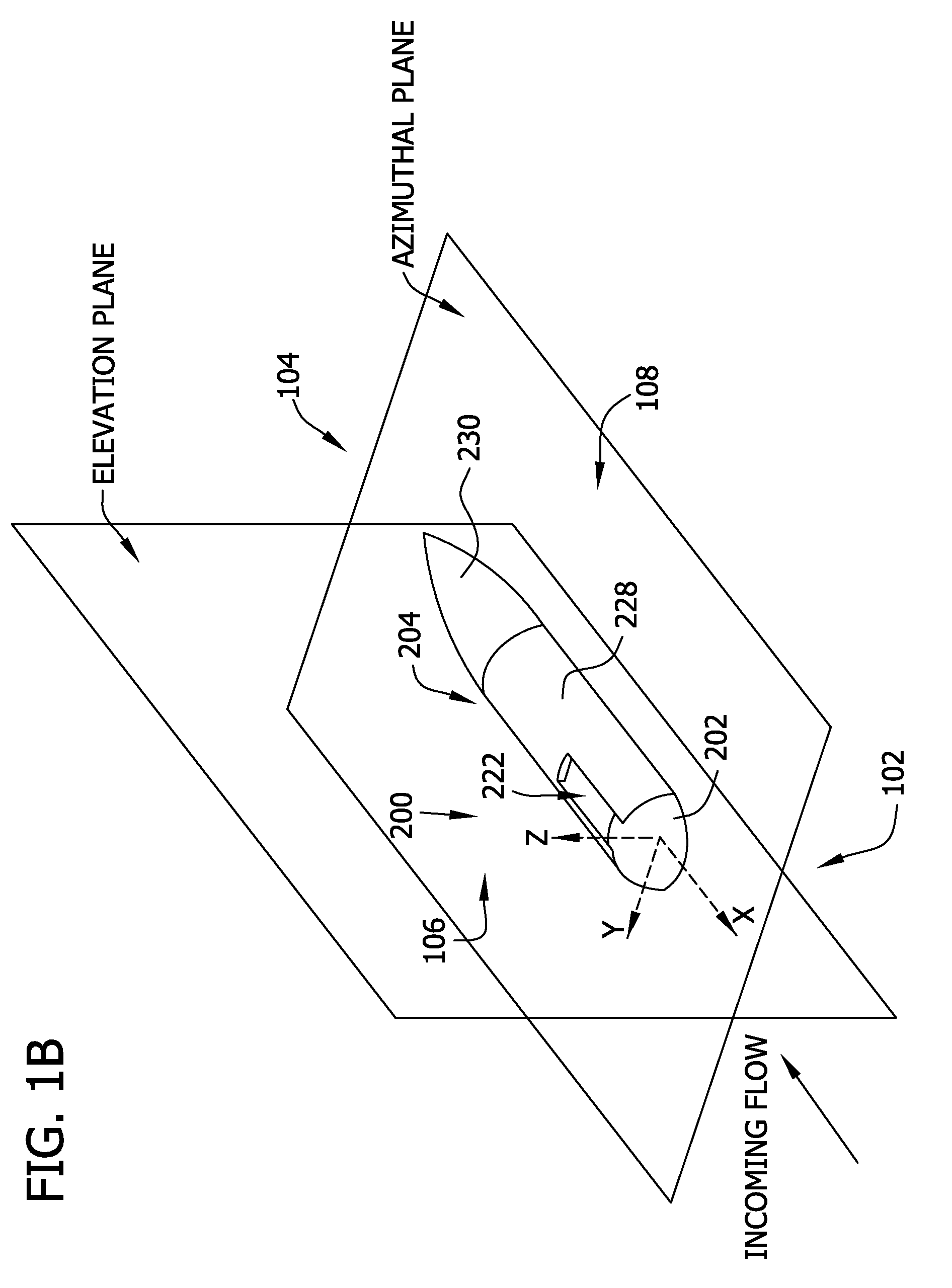Methods and apparatus for optical propagation improvement system
a technology of optical propagation and optical propagation, applied in the field of aircraft sensor systems, can solve the problems of known failures or limited results, and achieve the effects of facilitating airflow directing, facilitating regularizing concomitant aero-optic aberrations, and facilitating airflow directing
- Summary
- Abstract
- Description
- Claims
- Application Information
AI Technical Summary
Benefits of technology
Problems solved by technology
Method used
Image
Examples
Embodiment Construction
[0052]The effectiveness of a directed energy (laser or microwave) weapon or communication system mounted to an airborne platform, such as an aircraft, is significantly limited by aero-optic aberrations arising from density variations in air flowing over the aircraft. This lack of effectiveness is most limiting in the case where the directed energy laser system is pointed in the aft direction of the aircraft. The systems and methods described herein include a turret and fairing assembly that increases the effectiveness of a directed energy beam and increases a field of regard for propagation of the energy beam from an airborne platform flying at up to transonic speed. The example embodiment described herein incorporates a fairing section that includes a tuned cavity positioned between a tapered fairing portion and an aft fairing portion that excites a resonance mode of the airflow and causes the optical aberrations imposed by the shear layer to become more predictable over the entire...
PUM
| Property | Measurement | Unit |
|---|---|---|
| elevation angles | aaaaa | aaaaa |
| elevation angles | aaaaa | aaaaa |
| azimuthal angle | aaaaa | aaaaa |
Abstract
Description
Claims
Application Information
 Login to View More
Login to View More - R&D
- Intellectual Property
- Life Sciences
- Materials
- Tech Scout
- Unparalleled Data Quality
- Higher Quality Content
- 60% Fewer Hallucinations
Browse by: Latest US Patents, China's latest patents, Technical Efficacy Thesaurus, Application Domain, Technology Topic, Popular Technical Reports.
© 2025 PatSnap. All rights reserved.Legal|Privacy policy|Modern Slavery Act Transparency Statement|Sitemap|About US| Contact US: help@patsnap.com



